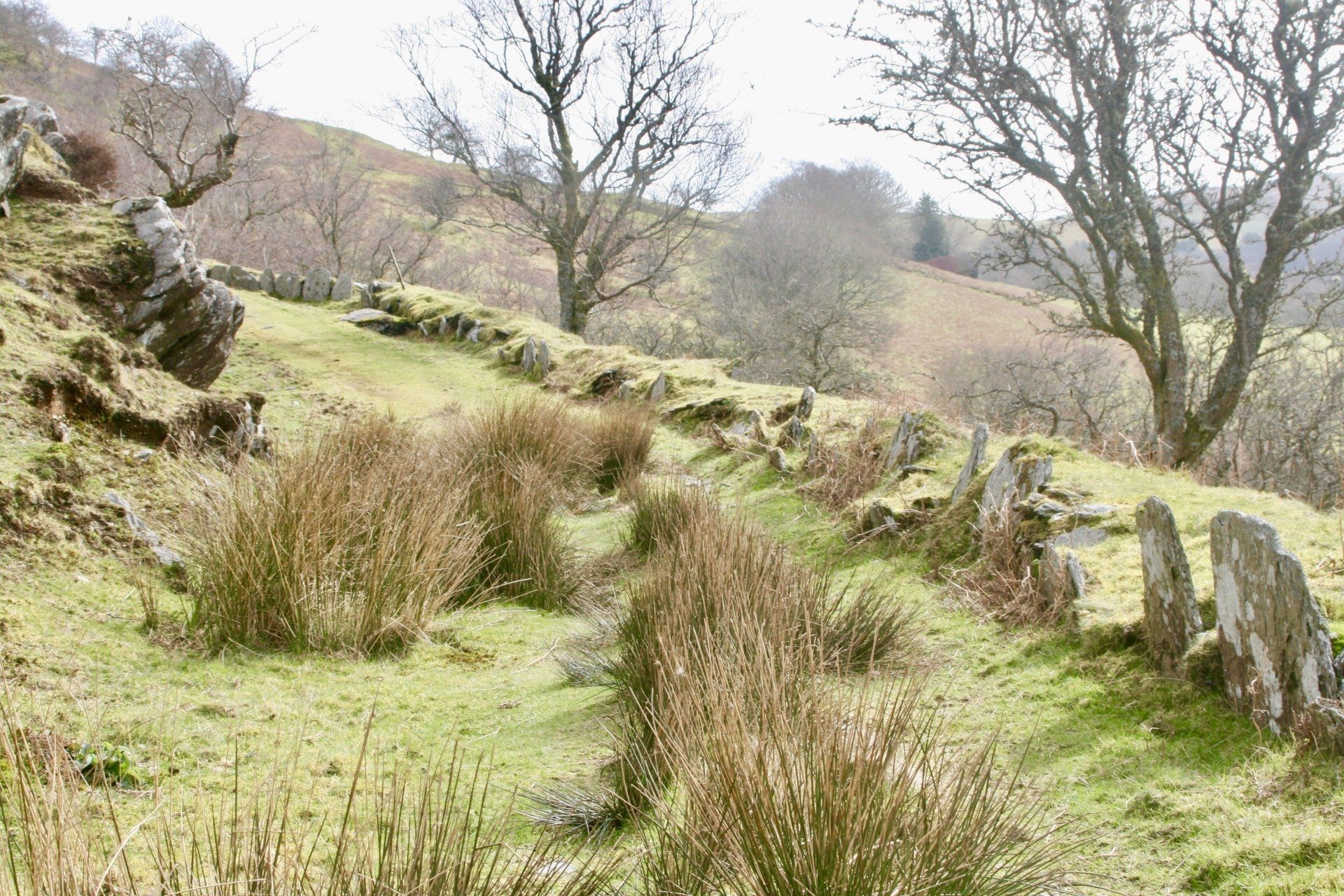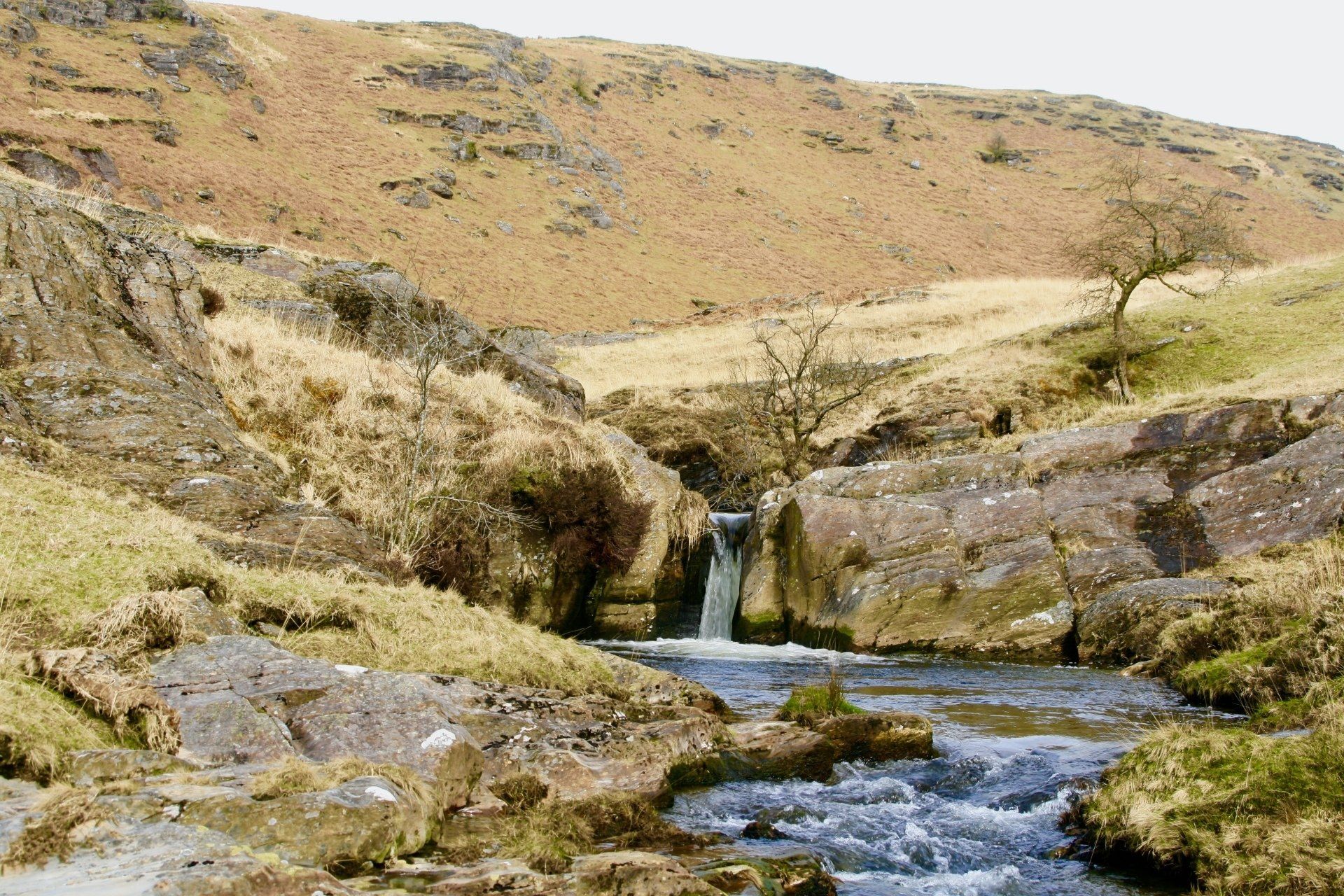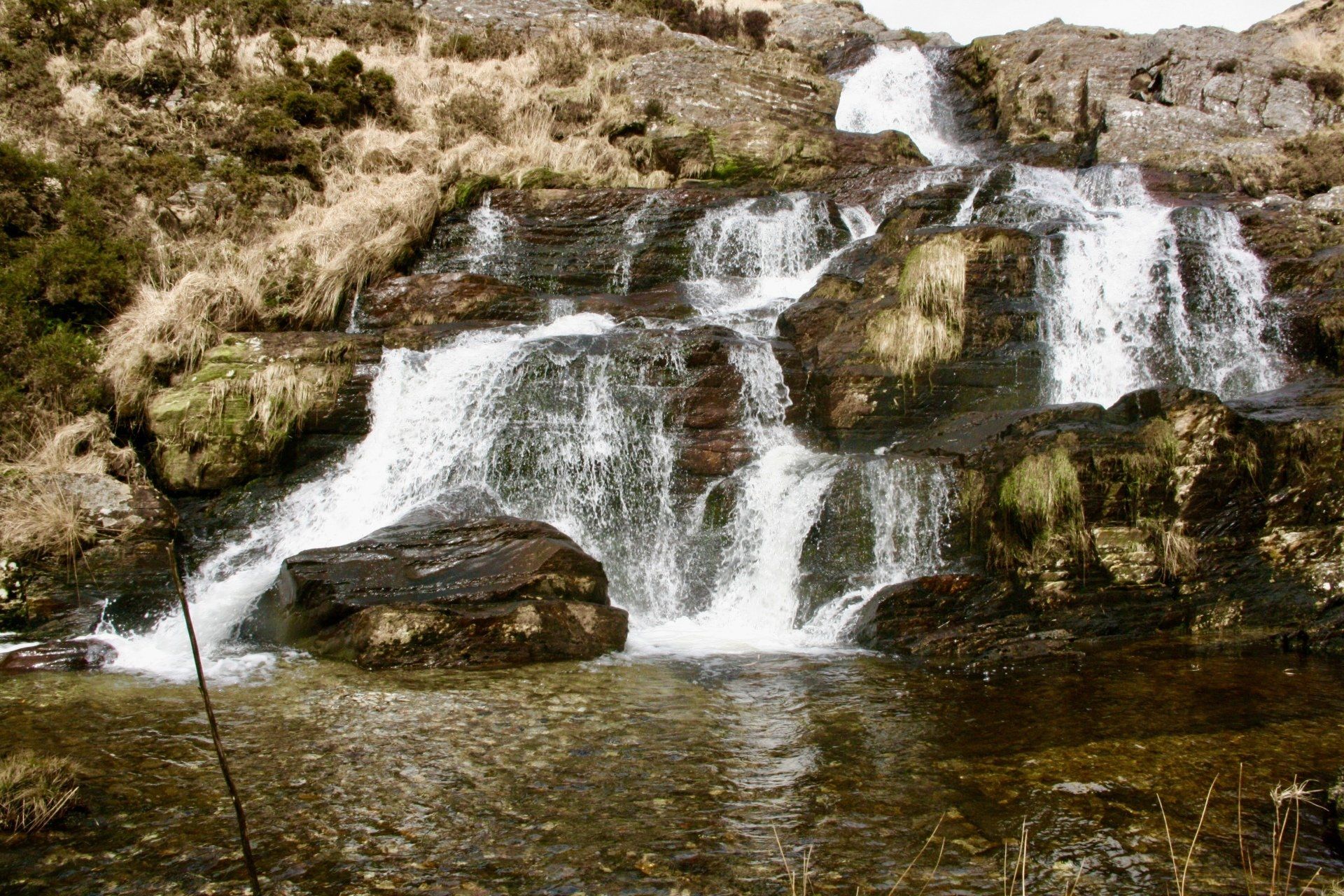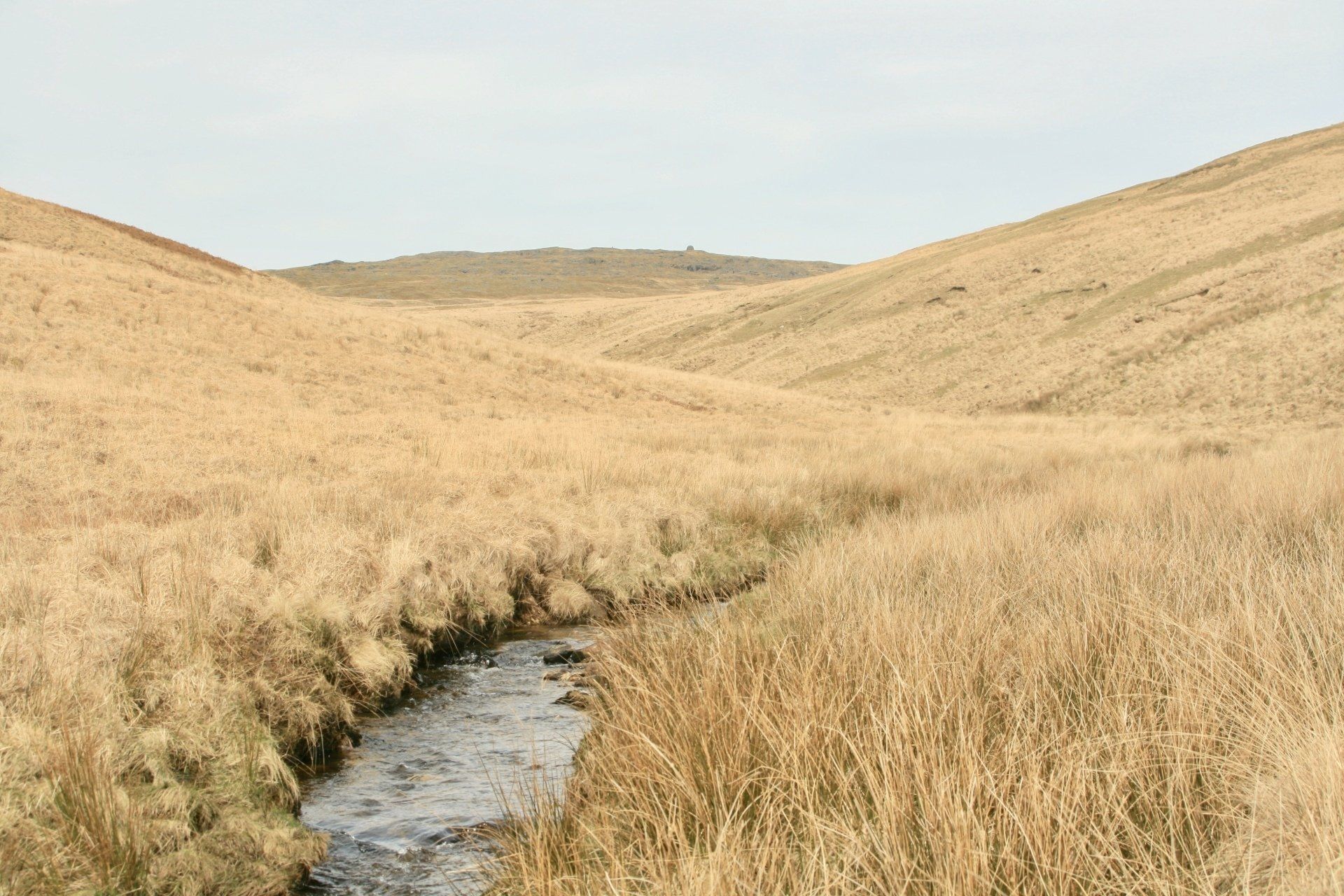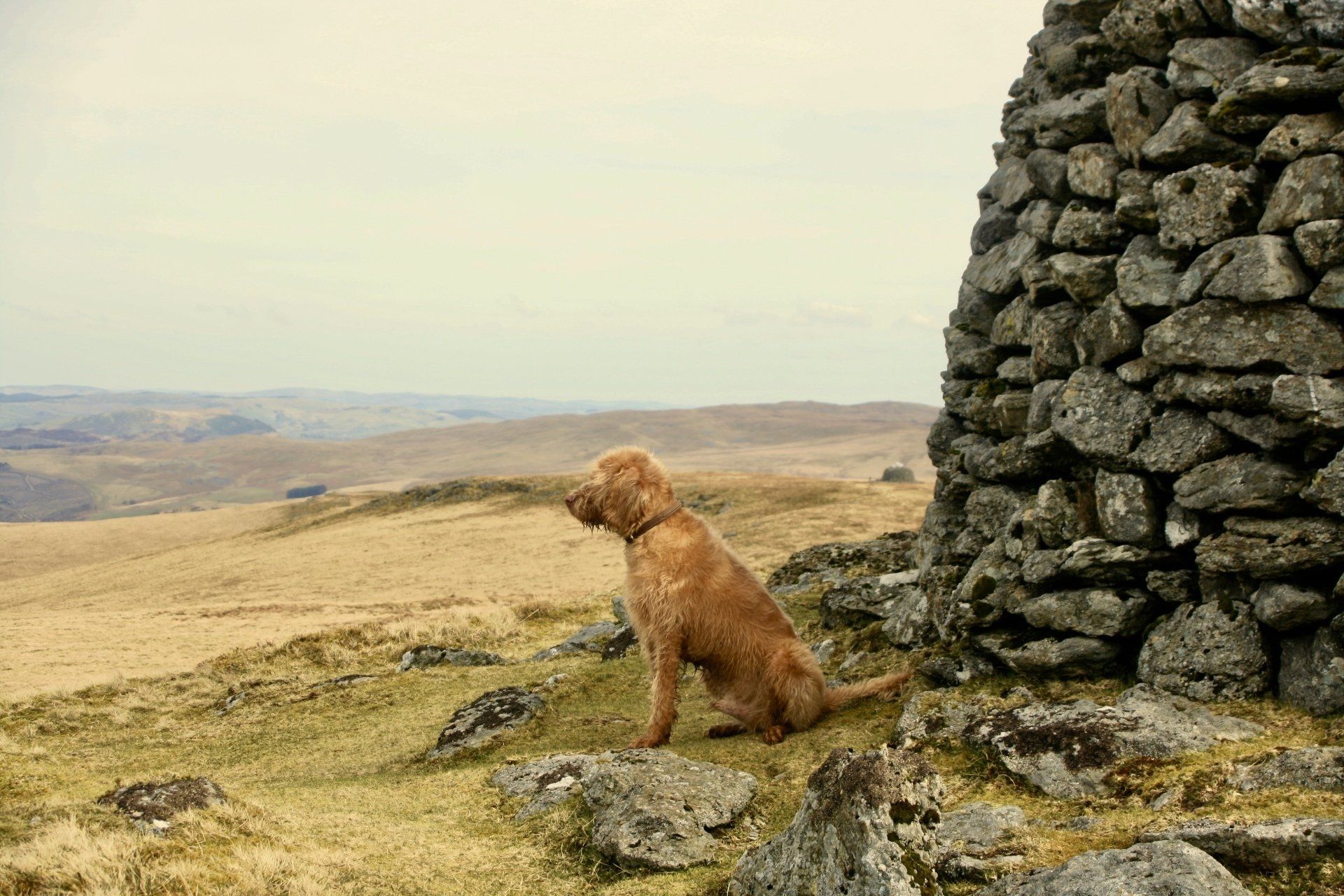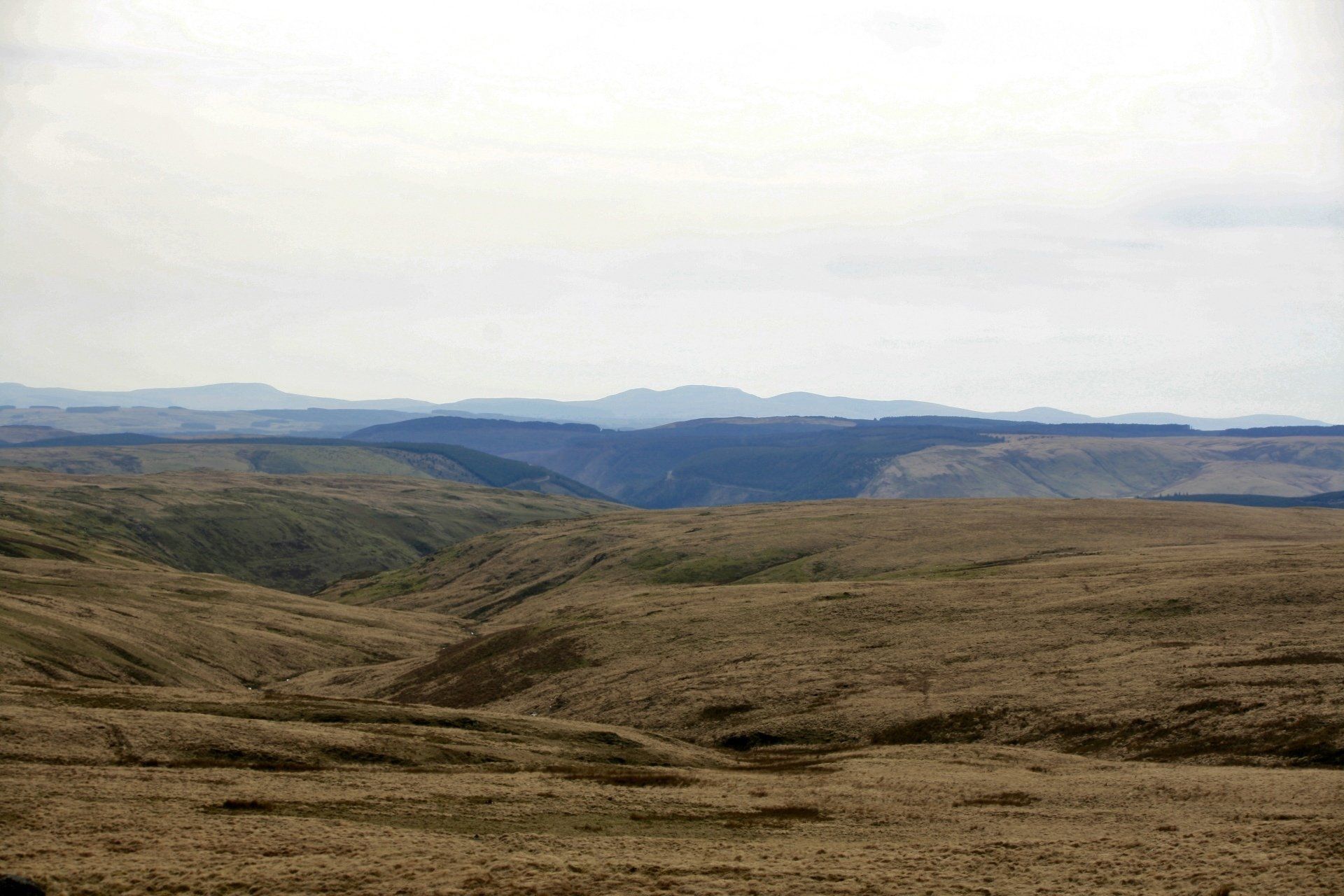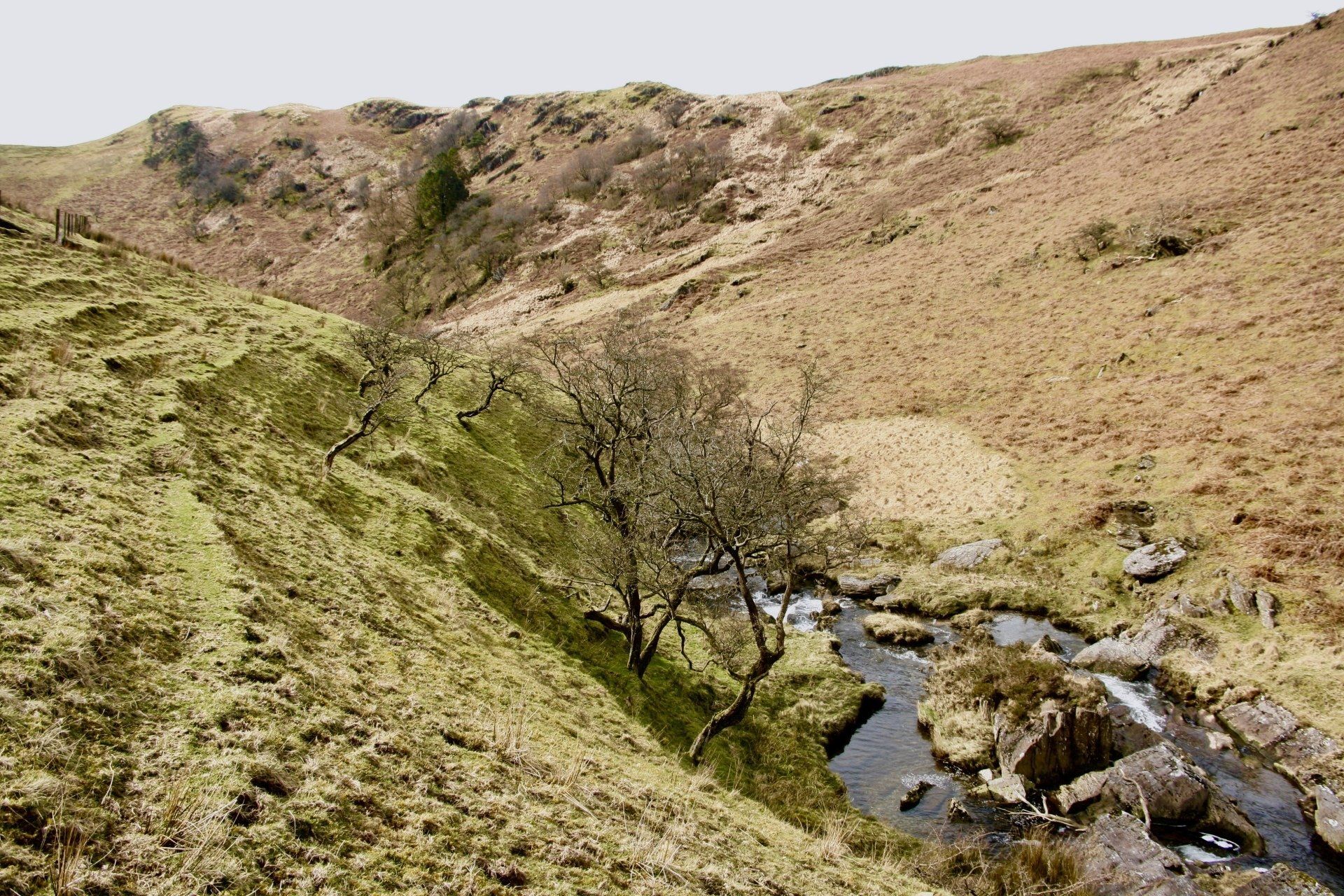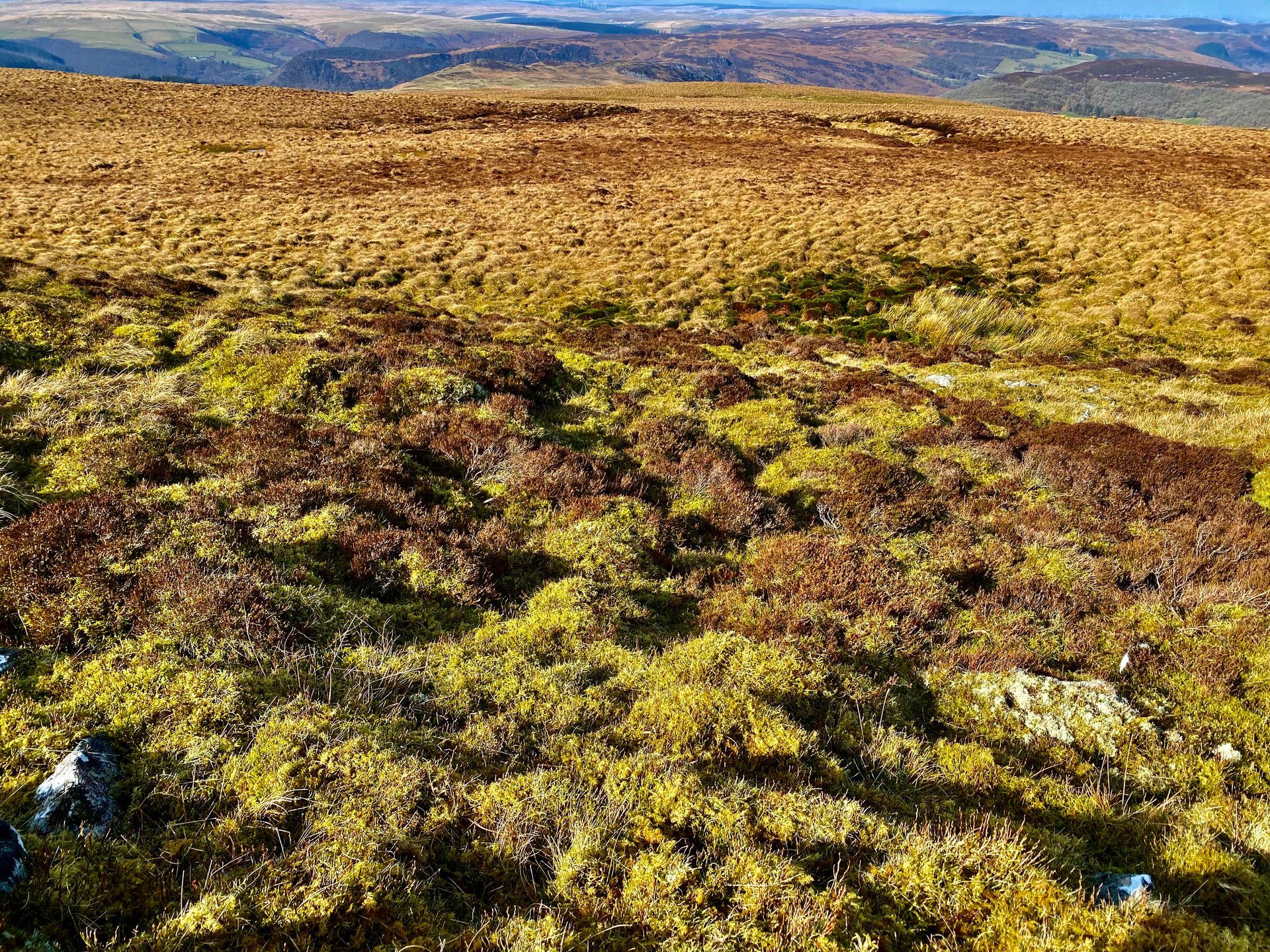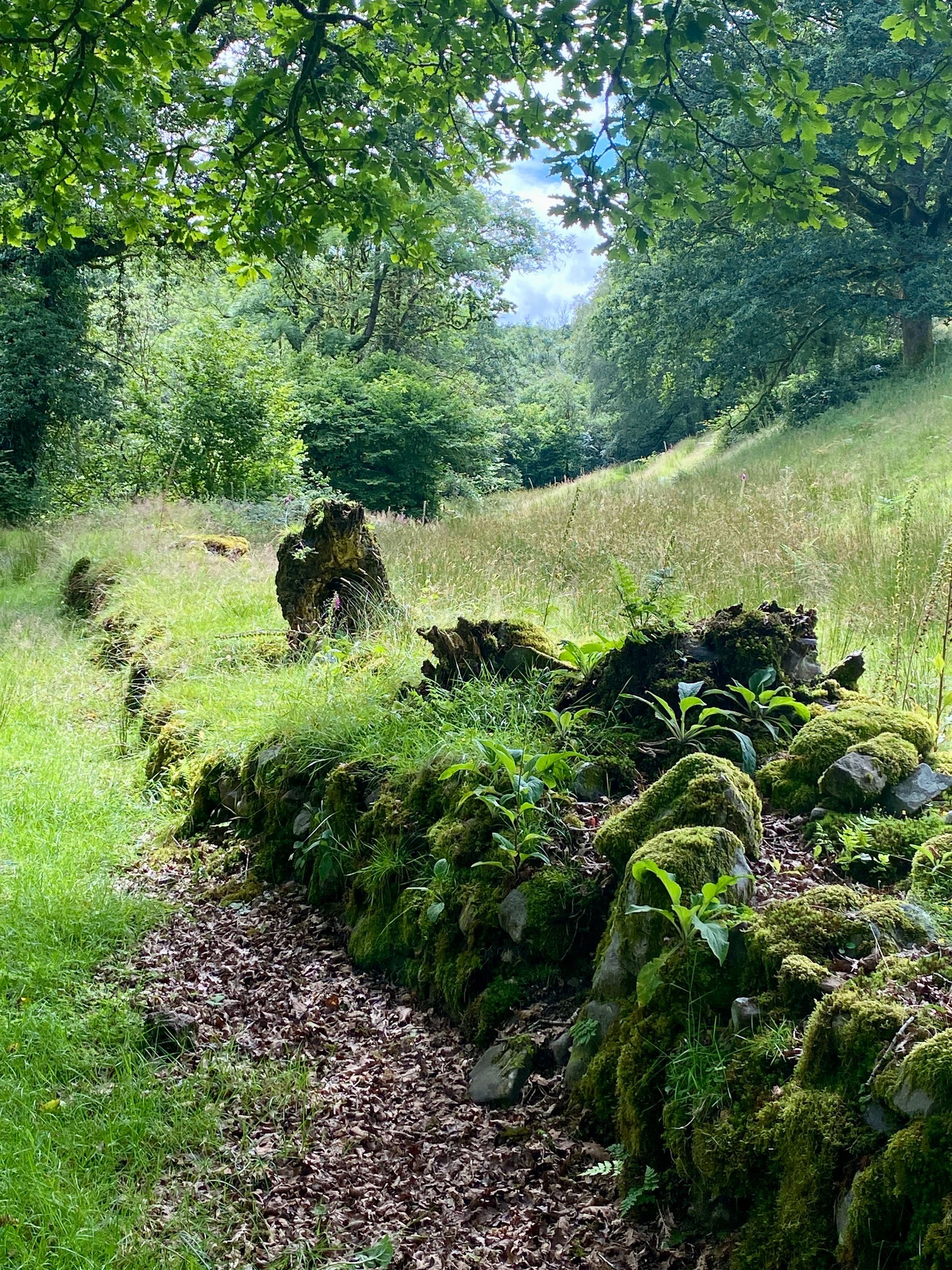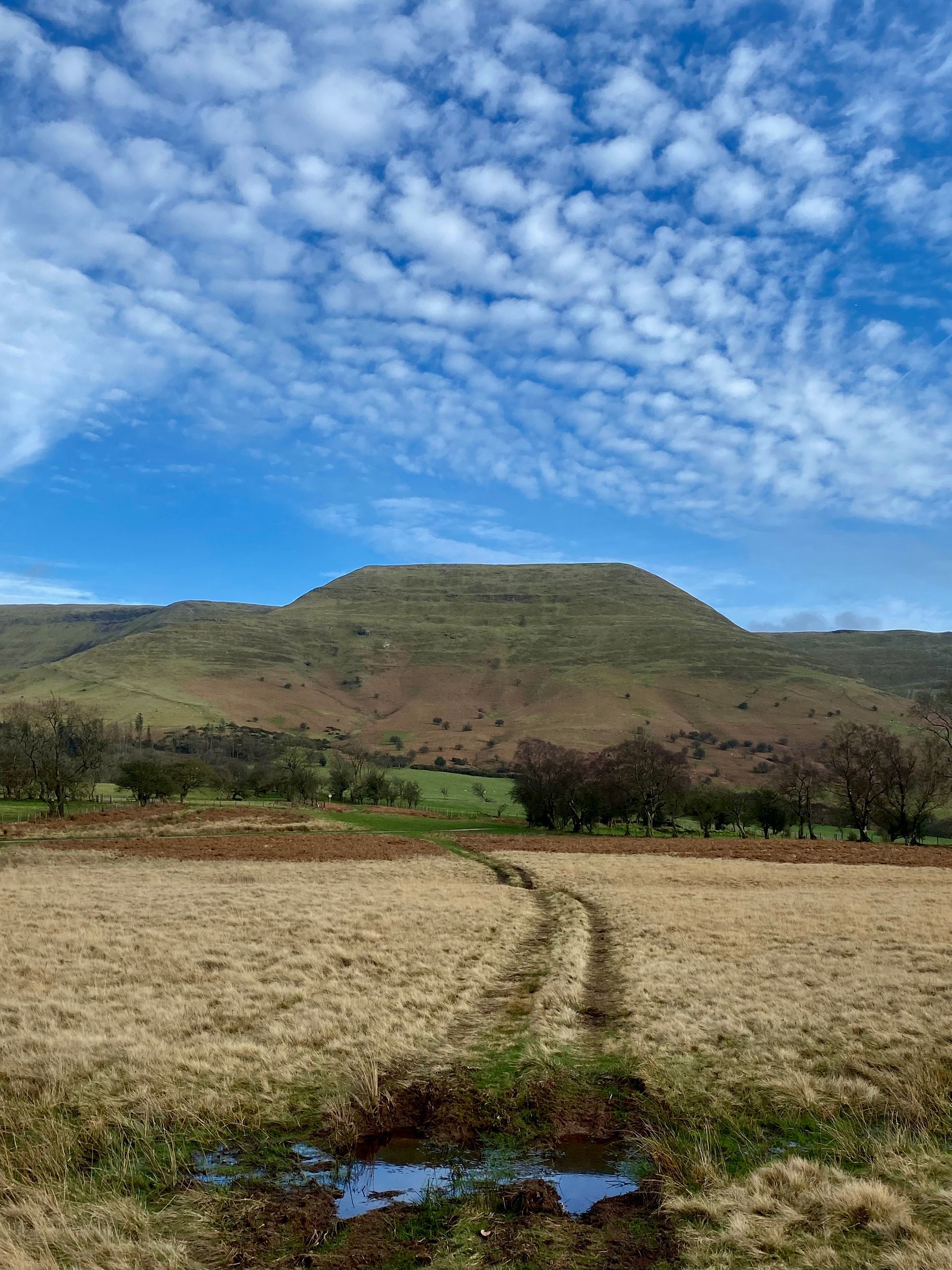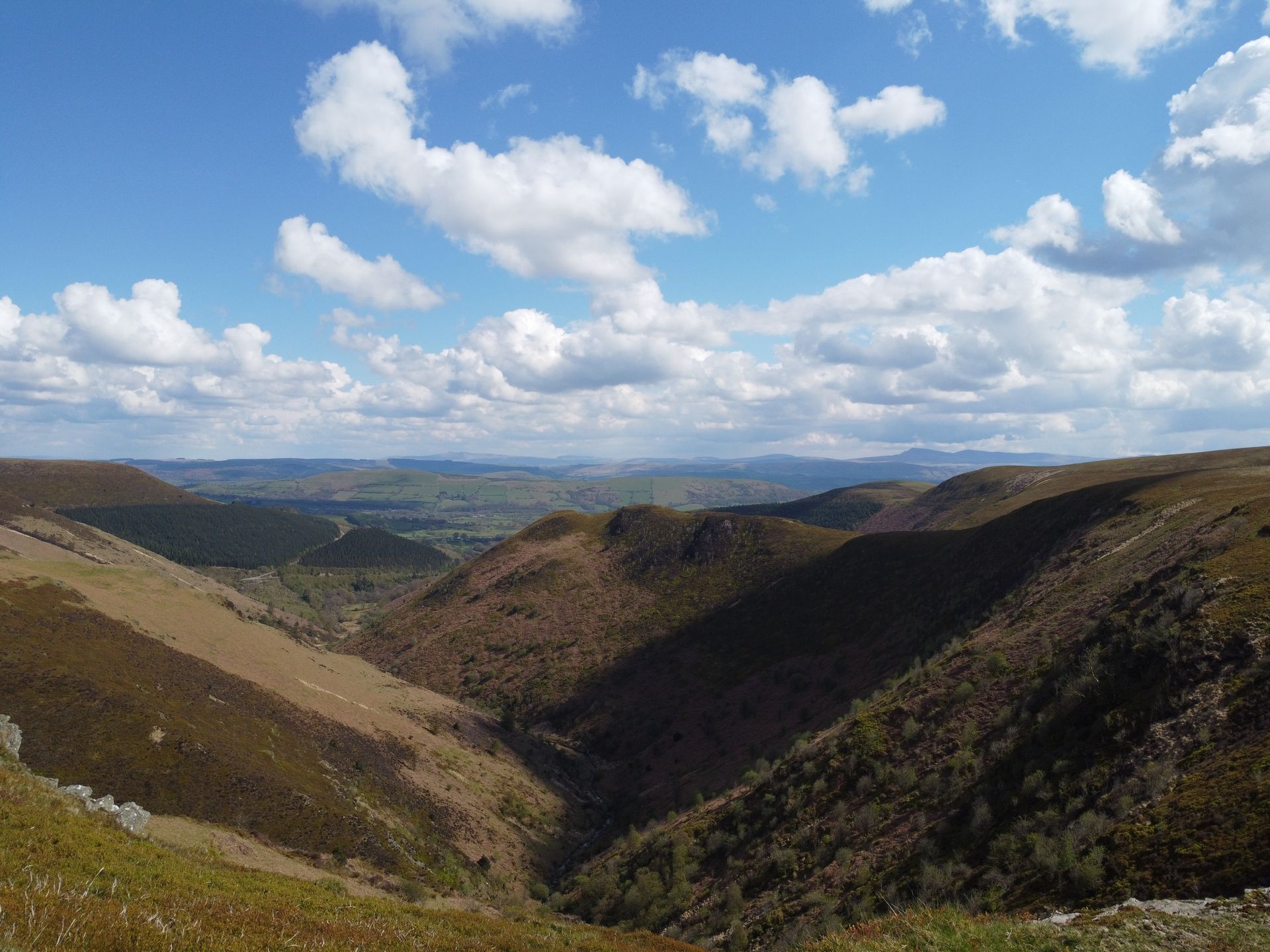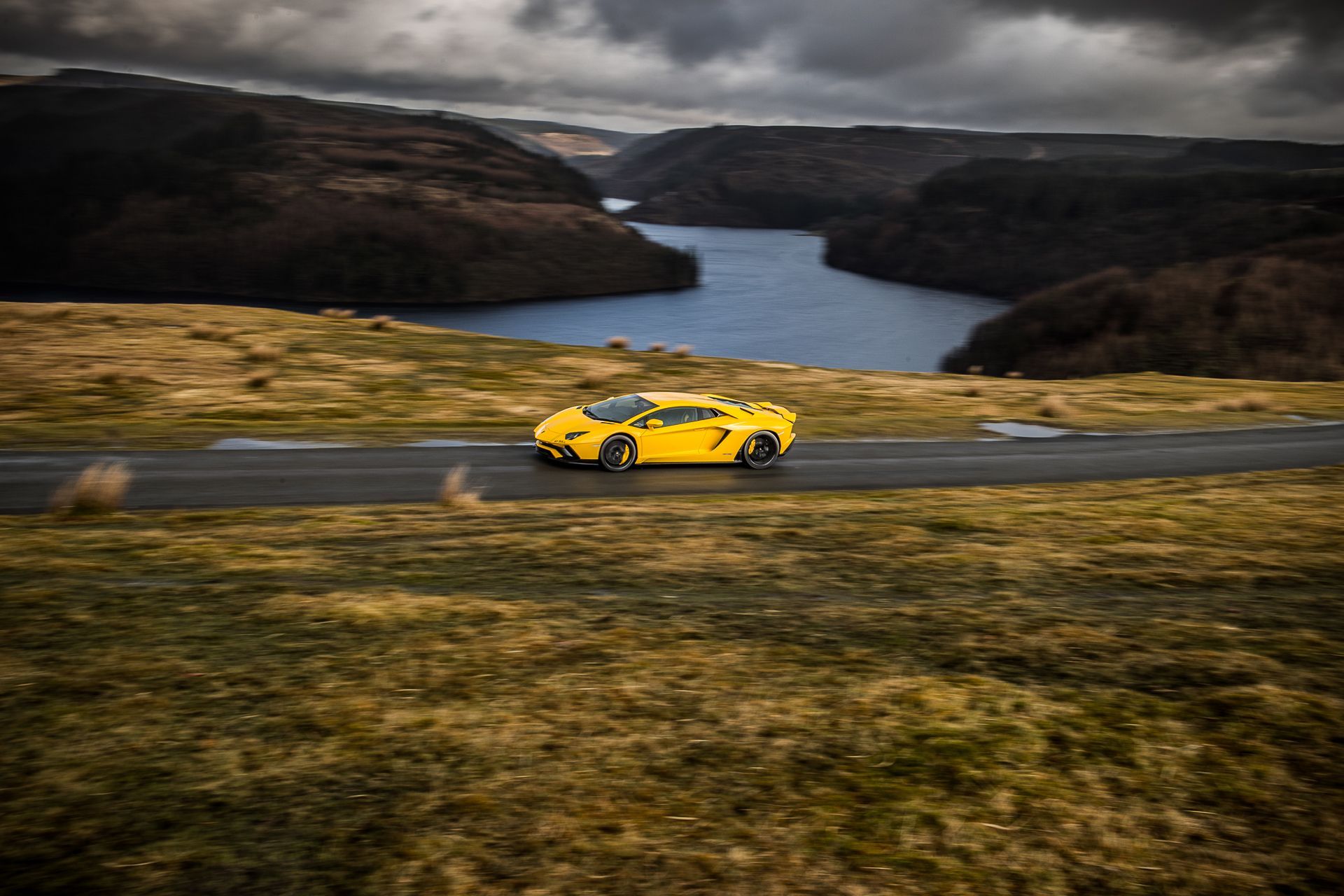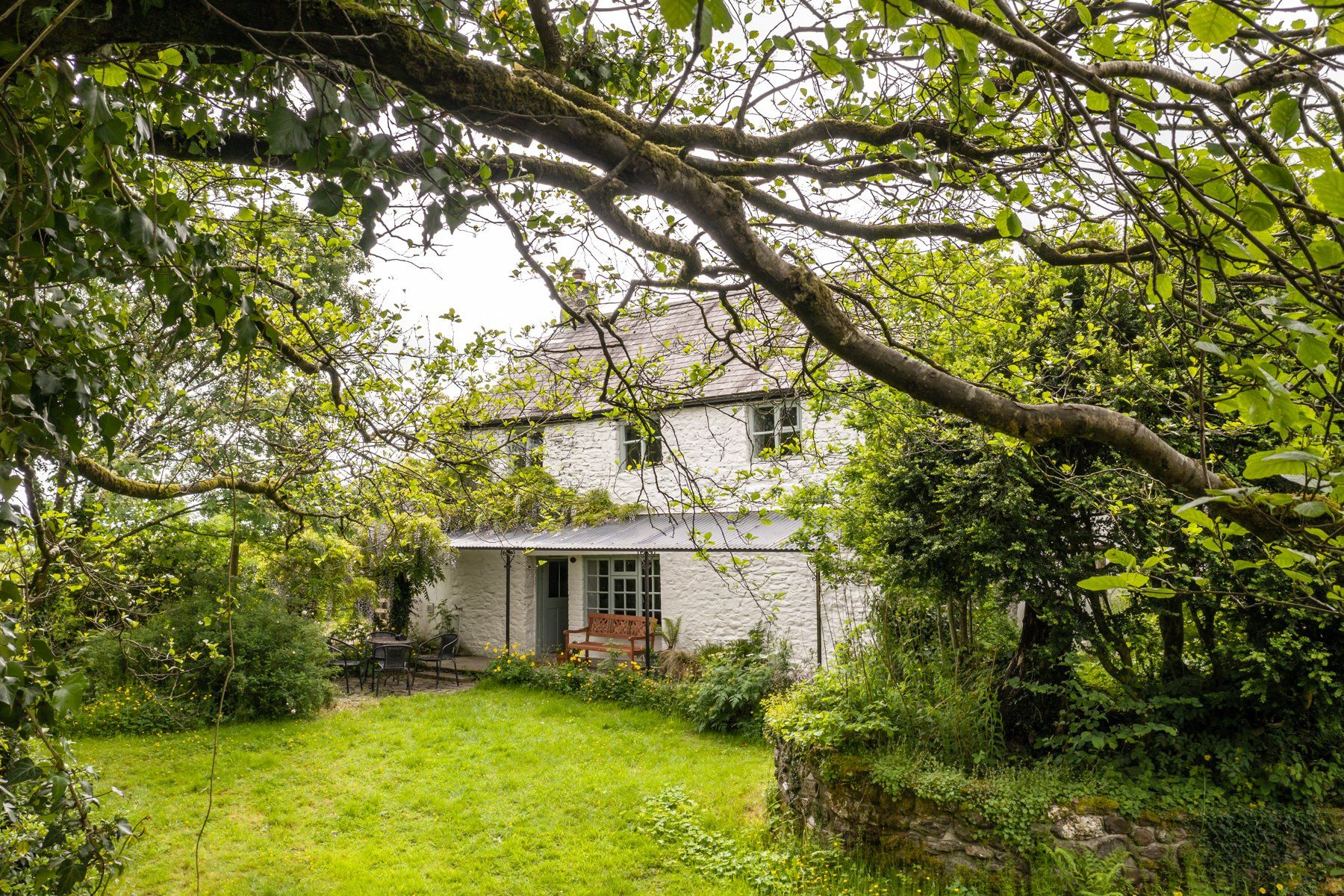Walking in the Cambrian Mountains: Drygarn Fawr and Cwmgwesyn
cambrianescapes • 2 April 2020
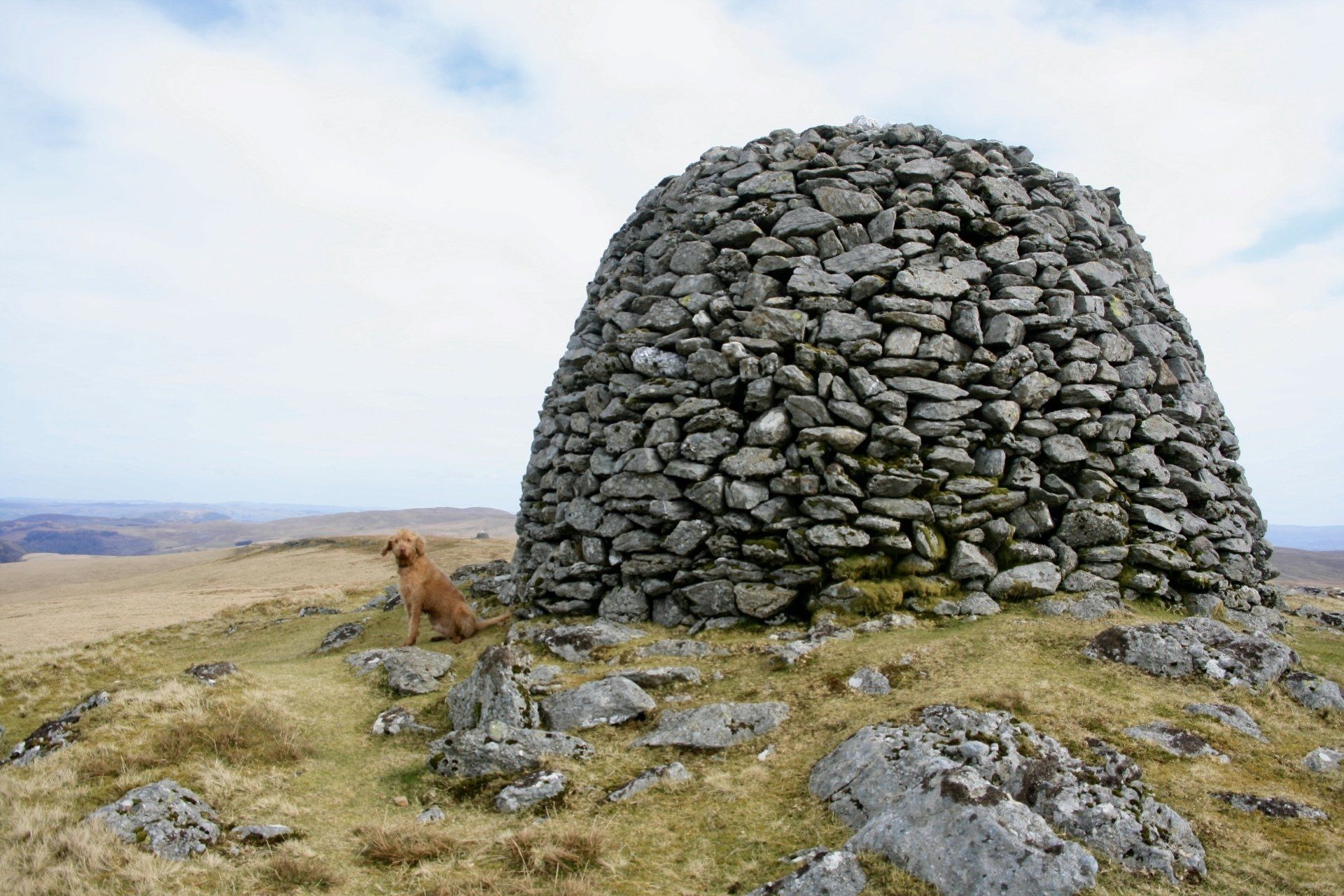
The Last (non-local) walk before Lockdown
Once upon a time, not so long ago, when freedom was a right and exploring new places completely normal, I drove to a secluded valley in search of waterfalls and Bronze Age Cairns.
Abergwesyn
Abergwesyn*1 is a 25 minute drive from us tucked away in the Cambrian Mountains. It has loads of archaeological remains including around 14 Bronze Age cairns - upland areas were used for ritual purposes back in the day.
The most impressive of these is at Drygarn Fawr, right on the summit of Abergwesyn, which is where I was headed, via a secret valley - Cwmgwesyn.
I stopped for a quick round of social distancing and some Oat Flips in the garage in Llanwrtyd Wells.
A man stared at me in horror and asked what I’d been up to.
I looked down and saw my ingrained muddy walking trousers and mud spattered coat, which I’d fallen down a muddy hill side in the week before. Laughing, I was forced to admit I hadn’t yet been up to anything. (Anyway, when has walking been a fashion show).
Cwmgwesyn
I parked up and headed towards the valley. I was momentarily annoyed when I reached a ford - it was not marked on the map and I’d recently been thwarted on a walk by another ford which was far too deep and cold to cross.
(Ed – doesn’t this annoyance seem ridiculous now when we can’t get out at all!)
Having got over myself, I took my boots off and paddled across. It was so cold that my right foot got the equivalent of an ice cream headache.
While I put my boots back on, I noticed a bat braving the sunlight and flying figure of eights overhead
.
I began to follow the sunken stone lined track up towards to the beginning of the valley where it narrowed before turning the corner and arriving at the gate into
Cwmgwesyn – National Trust. Grazed by ponies and sheep
The route winds it way up a perfectly formed valley (cwm) with a crystal clear stream with waterfalls babbling all the way.
If you’re not familiar with the mountain streams of the Cambrian Mountains, you need to get acquainted. Dynamic, fast moving, water levels reactive to rainfall and the action of the peat bogs storing rainfall near their source, they are ever changing their course and topography.
Piles of stones deposited on one bend after a heavy rain dumping will be picked up again and deposited further downstream after the next storm. The one thing that never changes, is that they are crystal clear.
Lunch (two hard boiled duck eggs and the aforementioned Oat Flips) was eaten overlooking a fantastic waterfall (below) at the head of the valley. I took some photos of the waterfall and only when I got back home and downloaded it, did I see The Face. How many can you see?
I finished lunch and climbed up the right hand side of the waterfall and continued to follow the stream.
Tramping through the Molinia (purple moor grass) which was arduous and a bit of work out. Tumpy sodden tussocks of molinia now dominate a lot of mountains and uplands.*2
But the dog enjoyed frequent paddles and drinks in the stream and it was exciting to look up and see our destination - the beehive cairn - silhouetted on the horizon.
It’s always great to have something to aim at – especially in landscapes like these where there are few distinguishing marks.
I consulted the map, which clearly indicated I was on not much of a path but I could see the promise of a bridlepath (and hopefully the end of the sodding molinia), before the final ascent.
As I got closer towards the bottom of final ridge I spotted a few quad tracks about half a mile away. That’ll be the bridlepath then. I kicked myself, laughing, for even thinking it would be a civilised, clearly visible bridlepath and pushed on up. *3
The cairn
is huge almost 6m wide diameter and nearly 4m tall (I read that afterwards, I didn't take a tape measure). There are two on this ridge of Drygan Fawr. The original Bronze Age base is still there and some of the stones making up the base are more than 1m long. But the beehives you see now, with quartz stones on the top, was a rebuild sometime in the 20th Century. They are fun – though you can’t help thinking what a job to get all that stone up here (on the non existent bridlepath).
There are 360 views towards the Elan Valley in one direction and the Brecon Beacons in the other.
The bulky reassuring outline of the Carmarthen Fans are closest and the snowy peak of Pen Y Fan was also clear in the distance.
It was blowing an absolute freezing cold hoolie, so after a few pictures we started off again.
This time I returned to the waterfall on a slightly higher route (on the ridge to the left in the picture above), avoiding the hard walking next to the stream proffered by the molinia.
I descended into the hidden valley -which felt sheltered in comparison to ridge - and the dog and I wended our way home on weary but happy legs.
Fortunately it's all downhill, bar one sharp incline close to home which gives the quadriceps one last, post molinia scream.
The end (literally)
A short car drive later and the dog and I staggered in and hit the sofa.
I sort of knew it would be the last 'drive-to' adventure and I already look back at it with the sort of affection you feel when you know you can’t go back in time and things have changed forever.
You can find our route up through Cwmgwesyn to Drygarn Fawr on our feed on Komoot.
Notes to Editors
*
1. Abergwesyn Common
is part of the National Trust’s estate
*2. The problem of Molinia. Molinia is now a dominant upland grass on many uplands. Part of the issue is that it is not grazed by sheep, which are the dominant upland species. National Trust is doing some experiments with cutting it and then bringing cattle in as the first grazing species which is having some success. Other management includes burning
In Dartmoor, they are covering molinia in mineral salt lick which encourages the ponies to eat it, which is having some success.
*3 If you walk in the Cambrian Mountains a lot you’ll know that paths are often non existent, even if marked on the map. You often may see a set of quad tracks at best. As for signposts. Well, good luck with that. But that is part of its charm and integrity as the last wild part of Wales.
Cambrianescapes
targazing in Wales, best stargazing Wales, Cambrian Escapes, Dark Sky Wales, Cambrian Mountains Astro Trail, Brecon Beacons stargazing, Usk Reservoir stargazing, astrophotography Wales, stargazing holiday, luxury lodge Wales, glamping Wales, romantic stargazing getaway, astronomy sessions Wales, Seryddiaeth, Dark Sky
